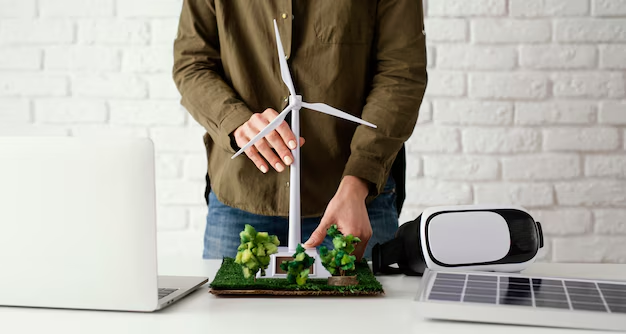Clean, Sustainable energy requires an all-time high level of demand at present. Growing climate change awareness and the requirement for efficient green power sources drive industries to change their energy production storage, and consumption methods. The transformation of sustainable energy production depends on technology, which simultaneously enables better accessibility, cost-efficiency and operational efficiency. Research in solar panel technologies and AI-assisted smart grid systems is creating conditions for clean energy to become the standard of the future.
1. The Rise of Sustainable Energy Technologies
The primary source of carbon emissions is the use of coal, in addition to oil, as traditional energy infrastructure. The energy sector benefits from clean technologies based on solar power wind cultivation, and water-generated power. Solar energy has become more practical for major electricity production through enhanced photovoltaic technology which creates more electrical power from sunlight.
- The development of new wind turbines enhances electricity production levels and minimizes financial expenses. Energy policies across the world now look to offshore wind farms as essential elements for power generation.
- Present-day hydroelectric systems improve water resource management to create greater electricity output with minimal environmental disruption.
- Sustainable energy resources produced 30% of total global electricity generation during 2023, as predicted by a rise in technological advancements, according to the International Energy Agency.
2. Smart Grids: Making Energy Consumption More Efficient
The equation needs more than clean energy generation to reach its completion. The control of energy output needs equal attention to its management. Through AI and real-time data analysis, smart grids perform optimum supply and demand management which leads to reduced power waste and enhanced distribution outcomes.
- The distributed grid management system uses smart features that locate current power requirements to stop power outages and ensure better performance.
- The integration of advanced battery systems allows for surplus Sustainable energy storage, which becomes available for use when production decreases.
- Energy customers can access smart meters to observe and control their power usage which results in decreased electricity costs and lower demands on the power grid.
3. Energy Storage: Overcoming the Intermittency Challenge
The main obstacle to Sustainable energy arises from the unreliable nature of power generation through wind and sun. Lithium-ion batteries along with solid-state batteries, enable power storage of excess energy that becomes available during production decreases.
- The implementation of grid-scale batteries builds stronger power reliability networks for both cities and industrial operations.
- Large facilities can use hydrogen fuel cells to gain extended periods of clean energy storage capability.
- Recovery of materials from battery products enhances storage capacity and removes environmental risks.
Energy storage solutions have become cheaper by 80 percent in ten years which enables quick adoption of environmentally friendly electricity.
4. AI and IoT: Optimizing Energy Use in Real Time
Artificial Intelligence (AI) together with Internet of Things (IoT) technologies, have transformed energy consumption into a more intelligent operation. These technologies analyze power usage data obtained from residential, commercial, and electrical grids to enhance optimization levels.
- Modern intelligent heating devices use actual meteorological conditions to control temperature levels at homes.
- Power plants using AI forecasting maintenance functions keep running without interruptions.
- The functionality of IoT-enabled appliances remains constant while they decrease the amount of electricity that consumers need to use.
The immediate optimization system delivers dual savings between monetary and environmental pollution reduction.
5. Sustainable Transportation and Green Energy Integration
Electric vehicles together with charging systems, are vital components that help decrease our dependence on petroleum products. The combination of better EV batteries and many public charging stations has made electric cars more usable on a daily basis.
- The availability of electric vehicles rises through solar-powered charging stations.
- Through V2G (vehicle-to-grid) technology electric vehicles get the ability to power up the grid with their stored energy.
- The implementation of electric transit systems leads to emission cuts in urban metropolitan areas across the world.
Experts anticipate electric vehicles will comprise more than half of the new car production in 2030, thus reducing worldwide gasoline consumption.
Final Thoughts
Technology has turned sustainable energy into a practical solution by reducing prices and making operations more effective in different industries. The future of clean energy takes shape because innovations like smart grids and AI-driven optimizers are guiding our path.
Looking to implement advanced energy solutions? Seq Technologies offers cutting-edge tools to drive sustainability in your business!



